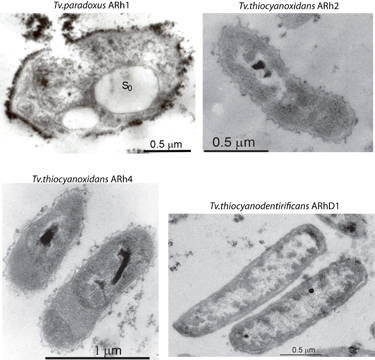Thiocyanate is a compound that is formed as a waste byproduct of indeustrial processes that lead to the production of precious metals or in processing fossil fuels. Currently, removing thiocyanate from industrial waste streams involves the use of sulfur-oxidizing Thiobacillus bacteria, which results in highly alkaline thiocyanate detoxification streams that need further neutralization before they can be fed to the bioreactors. One solution to the problem involves the use of thiocyanate-utilizing sulfur-oxidizing bacteria that are haloalkaliphilic or thrive in high salt and pH environments.

Photo: Dimitry Yu Sorokin
Researchers have known that Thiobacillus bacteria are capable of using thiocyanate for energy, and studies have identified the enzymes and mechanisms involved in the process of breaking down the inorganic sulfur compound for use. Finding the same pathway in Thioalkalivibrio bacteria, which thrive in very alkaline and saline soda likes, allows researchers to learn more about the process by which bacteria can harness thiocyanate for energy. By sequencing the complete genomes of three different Thioalkalivibrio species of sulfur-oxidizing bacteria, researchers can characterize the pathways used by different bacteria and use the information for bioremediation applications.
Principal Investigators: Gerard Muyzer, Delft University of Technology
Program: CSP 2010